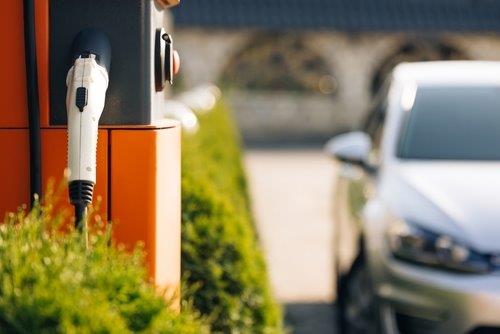Electric Vehicle Tax Credits and the Future of the Automotive Industry
 One highlight of the recently passed Inflation Reduction Act of 2022 (IRA; HR 5376) includes modifications to what is more commonly referred to as EV credits. Specifically, Section 30D of the Act is where the most important modifications are, and where the present tax credit for electric vehicles is spelled out in the U.S. Code. There is also new stimulus for previously owned electric vehicles, industrial vehicles and “alternative fuel refueling property.”
One highlight of the recently passed Inflation Reduction Act of 2022 (IRA; HR 5376) includes modifications to what is more commonly referred to as EV credits. Specifically, Section 30D of the Act is where the most important modifications are, and where the present tax credit for electric vehicles is spelled out in the U.S. Code. There is also new stimulus for previously owned electric vehicles, industrial vehicles and “alternative fuel refueling property.”
According to the Joint Committee on Taxation’s estimates, in lieu of what was previously known as the credit for plug-in electric vehicles, there is now a new clean vehicle credit. It is expected to be worth $7.5 billion over the next decade. Other noteworthy tax credits include $1.7 billion for “alternative fuel refueling property,” $1.3 billion available for buying a previously owned qualified plug-in EV, and $3.6 billion in tax credits for qualified commercial clean vehicles.
How the IRA Changes Section 30D and EV Tax Credits
For eligible, new clean vehicles, purchasers may receive $7,500 in federal tax credits and $4,000 for similarly used vehicles. It is important to note that taxpayers who purchase such vehicles are eligible for this tax credit if their modified adjusted gross income (MAGI) during the current or preceding tax year is no greater than $300,000 for joint filers; $225,000 for heads of household; and $150,000 for single filers. It is also limited to pickup trucks, vans, and sport utility vehicles up to a MSRP of $80,000. All other vehicles costing up to $55,000 are similarly eligible.
Critical Mineral Standards
Another important qualification for this tax credit is if the vehicle’s battery has a minimum threshold of critical minerals and if it has been processed in the required geographies. Section 30D(e) requires progressively increasing percentages of critical minerals either processed or extracted in the United States or another country the U.S. has an existing free-trade agreement with. If the stated percentages are recycled in North America, a vehicle’s battery components may also qualify for the tax credit.
Once guidance is issued by the U.S. Treasury and before the start of 2024, there must be at least 40 percent of eligible critical minerals to qualify. Vehicles placed in service in 2024 must have at least 50 percent critical minerals in their batteries. Critical minerals must be 60 percent, 70 percent and 80 percent of a battery’s components in 2025, 2026 and after Dec. 31, 2026, respectively. Dependent on future guidelines developed by the Internal Revenue Service, manufacturers will have to sign off on battery component makeup.
Requirements for Battery Manufacturing/Assembly Requirements
According to Section 30D(e)(2), prior to Jan. 1, 2024, at least half of the components of an EV battery must be assembled or manufactured in North America. Starting in 2024 and through 2025, 60 percent of a battery must meet such requirements. Beginning in 2026 through 2028, this requirement will increase by 10 percent annually, eventually requiring 100 percent of a battery’s construction to meet these standards beyond Dec. 31, 2028.
Other Considerations for Tax Credit Eligibility
If any critical minerals were extracted, handled or recycled by a “foreign entity of concern,” it is prohibited by the IRA for tax credit eligibility. Similarly, final assembly also must take place within North America to retain eligibility for the tax credit. Being considered a “qualified manufacturer” is another requirement that is necessary to maintain tax credit eligibility. This is any manufacturer that adheres to the EPA’s Title II Clean Air Act rules.
With the push for cleaner and greener energy evolving, this is one of many tax credits for consumers and businesses alike to reduce emissions and navigate the U.S. Tax Code.